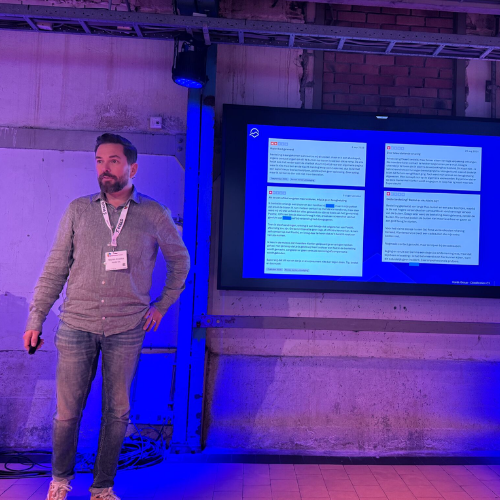Why broken delivery promises are killing customer loyalty...
(and what you can do about it)
By Michiel Arnoldus
Last week, I had the opportunity to speak at Shopping Today; the Netherlands’ biggest e-commerce knowledge event. It was an energising day.
Not just to share our own work at Hardis-OMS, but to listen, connect, and reflect with others who are shaping the future of retail.
What stood out most to me was how often one topic kept coming up in different forms — customer loyalty. Everyone’s chasing it, everyone’s struggling with it, and almost everyone agrees it’s harder than ever to earn.
Loyalty is the new growth
We all know that acquiring customers is becoming more expensive, while keeping them is more critical than ever. But loyalty today looks different. It’s not built through flashy campaigns or clever discounts. It’s built through consistency; the quiet, everyday act of keeping your word.
At Hardis-OIL, we talk about promise a lot. For us, that word has real weight and value.
It’s about connecting every system, process and person involved in getting a product from basket to doorstep, and making sure that what you promise a customer is something you can actually deliver.
Because that’s where loyalty truly lives: not in what we say, but in what we do after the click.
When promises fail
Every time a customer clicks “Buy”, they make a small leap of faith. They pay before they’ve seen or touched the product. In that moment, you’re borrowing their trust.
And when a delivery arrives late, incomplete, or not at all, that trust evaporates, it’s gone. Research shows that 79% of consumers don’t return after a bad post-purchase experience. One broken promise can undo years of brand-building in seconds.
I see this play out with retailers all the time. The marketing is excellent, the online experience seamless, but the backend can’t keep up.
The issue isn’t usually people , it’s systems. Stock data doesn’t talk to the store. Fulfilment doesn’t talk to transport. Somewhere along the line, the promise breaks.
That’s the gap we help close.
The real cost of a broken promise
Let’s put this in perspective. If it costs €60 to acquire a new customer, and your average margin is €10 per order, you need that customer to buy six times before you break even.
So when one late delivery sends them elsewhere, you’re not just losing a sale — you’re losing the entire relationship, plus the marketing spend that brought them to you in the first place.
Promise only what you can deliver
You can’t repair broken trust with more marketing. Once a promise fails, it sticks in the customer’s mind. That’s why every retailer should start with a simple rule: only promise what you can deliver.
Be transparent. Set realistic expectations.Give customers real choice; pickup, delivery slots, carriers. And then make sure your systems are orchestrated to keep that promise, even when demand peaks.
One of our clients now dynamically calculates delivery dates based on real-time stock, warehouse capacity, and carrier availability. It’s not about being the fastest, it’s about being right.
And customers notice. In the Netherlands, 81% prefer a specific time slot over “fastest possible,” and nearly 46% would rather choose a convenient delivery time than get free shipping.
That’s not a nice-to-have feature anymore but rather a reflection of what people value most: reliability and control.
It’s possible, and it pays off
We’re currently helping a retailer go live with a dynamic delivery promise engine that makes accurate, transparent delivery options visible throughout the journey, not just at checkout.
It’s a small change on the surface, but a huge one for trust. It means the promise made to the customer is supported by the whole organisation behind it.
We’ll be sharing the results soon and I’m confident they’ll show what I’ve seen many times before: When you keep your promises, customers keep coming back.
Because at the end of the day, loyalty isn’t a programme or a campaign. It’s the quiet confidence a customer feels when they know you’ll do what you said you would.
That’s the kind of promise worth keeping.



"Returns don’t have to be a drain on profit. With the right systems in place, they become a moment to recover cost, loyalty, and trust."
Find out how OIL connects orders, inventory and fullfilment across all channels so you can deliver what you promise, every time.
